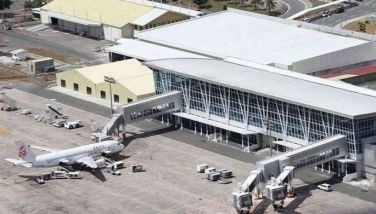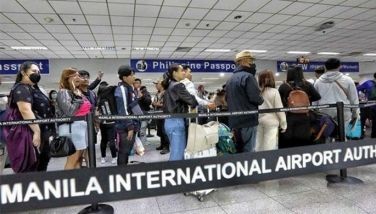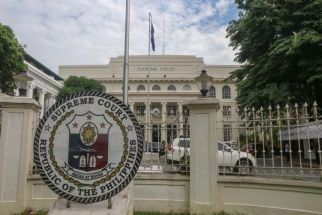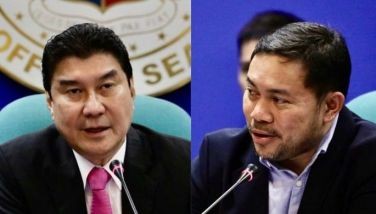Request for funding, but slow action

It always seems to be the case. Quick requests for funding, but slow action, and eventually questions on where all that money was spent.
I tried to do a quick Google search on how much funding the Philippines has gotten for past typhoon-related disasters and to see if there are any reports on how the funds were spent or actually accounted for, but it seems a quick search is not easily available and would take a more intensive research effort.
My quick search only showed that Tropical Storm Ondoy (which occurred on Sept. 26, 2009 and was the first ever major flooding disaster to hit Manila) and Super Typhoon Pepeng caused a total of $4.38 billion in damage and losses, equivalent to about 2.7 percent of our GDP.
The share of private sector damage and losses was estimated to be 90 percent of the total. Total cost of recovery and reconstruction was estimated at $4.42 billion, consisting of $942.9 million for recovery needs, and $3.48 billion for the reconstruction efforts over the short term (2009-2010) to medium term (2011-2012).
A more detailed accounting of how the disaster funds were allocated and what specific projects were implemented was not immediately available online and would thus need further research.
Interestingly, the cursory search showed that a recovery and reconstruction strategy was recommended including immediate restoration of rural livelihoods; housing alternatives for informal settlements and important role of local government units (LGUs) in implementing the recovery and reconstruction program and future measures to mitigate disaster risk.
A number of Disaster Risk Reduction (DRR) priorities were identified, including: improving flood management in Metro Manila, improving quality of and access to scientific data for predicting and forecasting disasters, mainstreaming of DRR into local planning and critical service infrastructure and improving access to disaster risk financing.
Based on my brief research, the government (among others) also received a $3 million grant under the Asia Pacific Disaster Response Fund (APDRF) as emergency assistance in response to its appeal to the international community to provide humanitarian relief assistance, in the aftermath of Ondoy.
Eight regions, including the National Capital Region were declared disaster areas, including Metro Manila and 25 provinces.
And yet, here we are, 15 years later, facing a similar flood disaster from what was a less destructive typhoon, and still faced with almost the same DRR priorities.
And the government’s first course of action is to bring out the begging bowl.
Following last week’s unexpected flooding from Carina, Finance Secretary Ralph Recto has announced that the Department of Finance (DOF) is ready to tap $500 million of standby credit line extended to the Philippines to support the national government’s disaster relief and rehabilitation efforts in the devastated areas.
However, according to the DOF press statement, the funds would be immediately withdrawn and released once President Marcos declares a state of calamity which will enable the government to deliver critical services like healthcare, shelter and food to those affected. The release of the funds would also be used for post-disaster emergency response, recovery, and reconstruction efforts.
According to the DOF statement, the World Bank’s Philippines Disaster Risk Management (DRM) and Climate Development Policy Loan (DPL), with a Catastrophe-Deferred Drawdown Option (CAT-DDO5), provides the Philippine government with immediate access to funds in order to manage risks arising from climate change, natural disasters and disease outbreaks.
Again, the DOF pointed out, a presidential declaration of a state of calamity or a public health emergency is required to trigger the release of the funds under the standby credit facility.
The CAT-DDO5 forms part of the Philippines’ Disaster Risk Financing Insurance (DRFI) strategy which aims to maintain sound fiscal health at the national level, develop sustainable financing mechanisms for LGUs and reduce the impact on the poorest and most vulnerable.
Likewise, there was a report from Malacanang that the President plans to tap a United Nations loss and damage endowment fund to finance projects of the government that would mitigate the impact of climate change-induced disasters.
What is puzzling, though, is that with all the relief money that is made available there is no clear accounting report on which agencies received the funds and what projects were funded by all that relief/ disaster/ mitigation and recovery money.
I would gladly welcome any report concerned government agencies could provide so that there could be better reporting on what the government has spent and done historically through the numerous disasters we go through. It would be an interesting and perhaps an enlightening read.
At present, there seems to be no accountability on who implemented what and who or which department or agencies should be taken to task for failing to resolve these regular occurrences.
Instead, it is always a blank slate, nobody is ever made accountable and we have no historical, accounting record of where all those disaster related funding were spent on.
Does the Commission on Audit even have authority to look into those funds so that the public can be made aware exactly why, with so much funds always offered, lent (do we have to repay them?), there is no clear paper trail of exactly where the financial assistance was spent on? Were the projects even real?
- Latest
- Trending





























